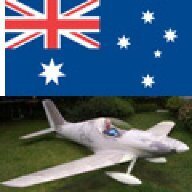As always, this comes down to 'interpretation' of vague rules trying to put everything into neat (simple) boxes, then being held fast, to the perceived meaning of the rules.
If what you have matches this perception, you're OK, if not, well.............
OK, the paper you found is aimed at people that, seeing a Lightwing could fly with a 912, arrange to put one in their aircraft, on their own.
This is technically not allowed.
To fly with the heavier 912, structural modifications need to be carried out to the airframe, usually to be done by Howard.
A current grey area would be if the aircraft is still certified, if you have Howard's (approved) mods carried out and signed off by a Level 2?
What NONE of the rules have, (or at least the people enforcing the rules) is the ability to interpret things like engines being made obsolete and/or superseded.
In your case, your old LW1 was built around a single ignition, pull start, 'B' box, Rotax 532.
Even before the 532 was replaced by the 582, most people had gone to at least electric start, often composite props and sometimes a locally produced dual ignition heads.
Back then everyone looked at it and said, "it's still a Lightwing, just a bit safer, easier to manage and performs a bit better.
So now the grey area is, "is replacing Rotax's 65hp two stroke with another Rotax 65hp two stroke", an act requiring an engineering order?
I think the age of your Lightwing would probably suggest it was originally registered at 400kg, which I think was the 95:25 MTOW at the time.
As the rules grew, you could have got in touch with Howard to get official manufacturers approval to up the weight, for a GR582 to 480kg (?) assuming the 582 would now have dual ignition, electric start, a 'C' box and oil injection.
Their are others having the same problems having 582's (the ONLY two stroke left) fitted to their LW1's
Hopefully, moves are afoot to be able to get special approvals (and maintain certification) to sort these sort of problems, BUT, be prepared to hold your breath a while......






